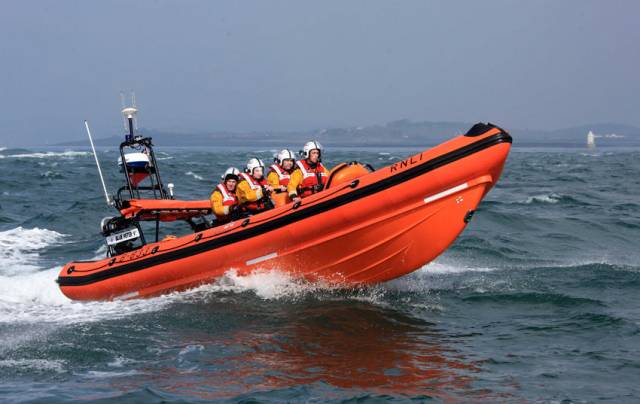Portaferry RNLI celebrated the lifeboat station’s 40th anniversary this past weekend with a party and presentation evening for crew members and their families.
During the course of the evening, the crew paid thanks to past and present members for their dedication and hard work over the last 40 years.
Portaferry lifeboat station owes its origins to an RNLI lifeboat station that was established in 1884 in the village of Cloughey, Co Down. The first lifeboat, called The Faith, was commissioned a short while after in 1885.
With the introduction of fast inshore lifeboats that were capable of making way against strong tidal currents such as those experienced in the Strangford Narrows, it was decided in 1979 to place a single-engine C class lifeboat in Portaferry for evaluation.
The lifeboat quickly proved to be a success and a twin engine D class was commissioned, before the station was officially established on 1 May 1980. The station was upgraded to 24-hour all-year operation in 1982.
The past 40 years have seen huge changes in the technology and design of the boats and the personal safety equipment worn by the crew.
Portaferry now operates a B class Atlantic 85 lifeboat known as Blue Peter V. Portaferry is one of seven Blue Peter RNLI stations, and the only one in Ireland, whose lifeboats have been sponsored by the world's longest-running television programme for children.
Presentations were made on the evening to past and present crew members for their hard work and commitment over the last four decades.
Lenny Lawson, Graeme Ellison and Billy Ellison were awarded certificates from the RNLI for their service of the many different roles they held within the station.
John Murray Snr, Pat Browne and Mrs Brownlow were presented with a present as a token of thanks from the crew for all their hard work and efforts in the roles they play in the fundraising guild team and throughout the station in the past 40 years.
Colin Conway and John Murray Jnr were presented with RNLI medals and a present from the crew to acknowledge their long service awards for 20 years and 40 years respectively.
The evening was enjoyed and attended by crew members, family and other members of the different teams within Portaferry lifeboat station.































































